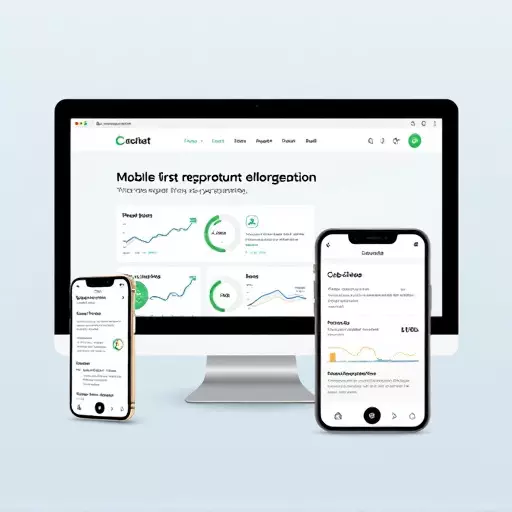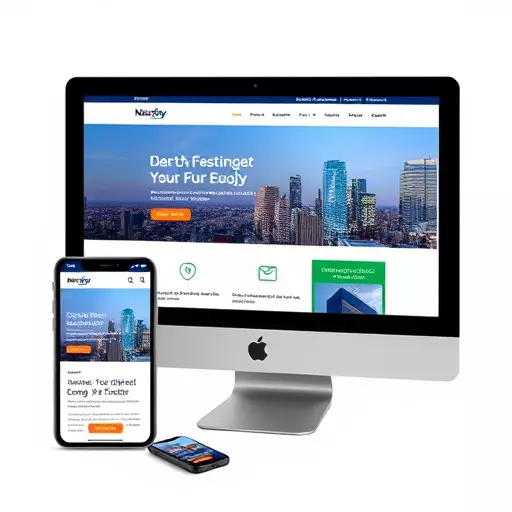In today's digital era, mobile devices dominate internet traffic, making interactive mobile content essential for user engagement. Responsive Web Design (RWD) is a cornerstone of modern development, ensuring websites adapt seamlessly to various screen sizes. New Jersey developers are leading the way in mobile-first website development, prioritizing smaller screens for faster loading times and easier navigation. Mobile page speed optimization, employing techniques like image compression and code minimization, enhances user satisfaction, retention, and search engine rankings, as Google favors mobile-friendly sites. For New Jersey businesses, adopting RWD and mobile-first strategies is crucial for thriving online, improving accessibility, engagement, and conversion rates while aligning with search engine best practices.
Interactive mobile content is transforming how users engage with digital information. In today’s mobile-driven world, understanding and implementing effective strategies are crucial for businesses in New Jersey seeking a competitive edge. This article delves into the multifaceted aspects of interactive mobile content, exploring topics such as responsive web design, mobile-first development best practices, performance optimization techniques, user engagement strategies, and emerging trends shaping the future of digital experiences. By leveraging these insights, businesses can enhance their online presence and cater to modern users’ expectations.
- Understanding Interactive Mobile Content: The Modern User Experience
- Responsive Web Design: Adapting to Mobile-First Strategies in New Jersey
- Key Components of a Successful Mobile-First Website Development
- Unlocking Performance: Mobile Page Speed Optimization Techniques
- Enhancing Engagement: Interactive Features for Improved User Retention
- Future Trends: Staying Ahead with Cutting-Edge Mobile Content Technologies
Understanding Interactive Mobile Content: The Modern User Experience

In today’s digital landscape, interactive mobile content is transforming how users engage with websites and applications. With a majority of internet traffic coming from mobile devices, understanding user experience (UX) on smartphones and tablets has become paramount. Responsive web design, a cornerstone of modern development, ensures that websites adapt seamlessly to various screen sizes, offering a consistent and intuitive experience across platforms. New Jersey-based developers are at the forefront of this trend, leading the way in mobile-first website development, where the design is optimized for smaller screens first, ensuring lightning-fast loading times and effortless navigation.
Mobile page speed optimization plays a crucial role in enhancing UX. Faster load times directly impact user satisfaction and retention. By employing strategies such as image compression, lazy loading, and code minimization, developers can significantly reduce page load times, enabling users to access content promptly. This focus on mobile performance not only caters to the modern user’s expectation of instant gratification but also contributes to better search engine rankings, given that Google prioritizes mobile-friendly sites in its search results.
Responsive Web Design: Adapting to Mobile-First Strategies in New Jersey

In today’s digital landscape, Responsive Web Design (RWD) has become a cornerstone for businesses in New Jersey aiming to succeed online. With more users accessing the internet through mobile devices than ever before, adopting mobile-first strategies is no longer an option but an imperative. RWD ensures that websites seamlessly adapt to different screen sizes and resolutions, providing an optimal user experience regardless of whether the site is viewed on a smartphone, tablet, or desktop computer. This adaptability not only caters to the diverse preferences of New Jersey’s tech-savvy users but also significantly boosts mobile page speed, which Google prioritizes in its search rankings.
By prioritizing mobile-first website development, businesses in New Jersey can expect improved accessibility, enhanced user engagement, and better conversion rates. Mobile-first strategies involve optimizing content, images, and code to load quickly on smaller screens, ensuring that visitors have a fast and responsive experience. This approach not only aligns with search engine best practices but also positions local businesses to compete effectively in the digital arena, where mobile dominance continues to grow.
Key Components of a Successful Mobile-First Website Development

Creating a successful mobile-first website involves several key components. At its core, a mobile-optimized site demands a robust responsive web design that adapts seamlessly to various screen sizes and devices. This means ensuring your New Jersey-based website looks and functions flawlessly on smartphones, tablets, and desktops alike.
Beyond visual adaptability, mobile page speed optimization is paramount. Faster loading times significantly enhance user experience, boosting engagement and retention. Techniques like minimizing image sizes, leveraging browser caching, and utilizing content delivery networks (CDNs) are essential to achieve this. By prioritizing these aspects, your website will not only attract more mobile visitors but also foster a positive, interactive experience that keeps them coming back for more.
Unlocking Performance: Mobile Page Speed Optimization Techniques

In today’s digital landscape, users expect instant access to information and seamless interactions on their mobile devices. Unlocking optimal performance for your website involves implementing robust mobile page speed optimization techniques. Adopt a mobile-first website development approach, ensuring your site is built with responsive web design principles that adapt beautifully across various screen sizes and devices in New Jersey and beyond.
This strategy not only enhances user experience but also drives better search engine rankings. Optimize images, minify code, leverage browser caching, and employ content delivery networks (CDNs) to significantly reduce page load times. By focusing on these mobile page speed optimization tactics, you’ll create a fast, efficient, and engaging online experience for your audience.
Enhancing Engagement: Interactive Features for Improved User Retention

In today’s digital landscape, interactive mobile content is a game-changer for businesses in New Jersey aiming to enhance user engagement and retention. By incorporating responsive web design and mobile-first website development strategies, creators can ensure their platforms seamlessly adapt to various devices and screen sizes, providing an optimal user experience regardless of whether it’s a smartphone or tablet. This approach is crucial in fostering long-term relationships with users, as a well-designed, mobile-friendly site encourages visitors to return.
Mobile page speed optimization plays a pivotal role in this equation. Faster loading times significantly improve user satisfaction and engagement levels. Interactive elements that are meticulously integrated into the website’s architecture not only capture users’ attention but also encourage them to explore different sections of the platform. This active participation leads to increased time spent on the site, directly impacting positive user retention rates and ultimately contributing to a successful online presence for businesses in New Jersey.
Future Trends: Staying Ahead with Cutting-Edge Mobile Content Technologies

As technology continues to evolve at a rapid pace, staying ahead in the digital landscape requires embracing cutting-edge mobile content technologies. One of the most significant trends shaping the future is responsive web design, which ensures that websites seamlessly adapt to various screen sizes and devices, providing an optimal user experience regardless of whether it’s a smartphone, tablet, or desktop computer. In New Jersey and beyond, mobile-first website development is becoming the norm, with designers prioritizing mobile functionality from the outset rather than optimizing later.
Additionally, mobile page speed optimization is crucial for maintaining user engagement and reducing bounce rates. Faster loading times directly impact how users perceive a website’s performance, influencing their decision to stay or leave. By implementing efficient coding practices, leveraging browser caching, and utilizing content delivery networks (CDNs), developers can significantly enhance mobile page speeds, ensuring that visitors enjoy a seamless and responsive experience.


